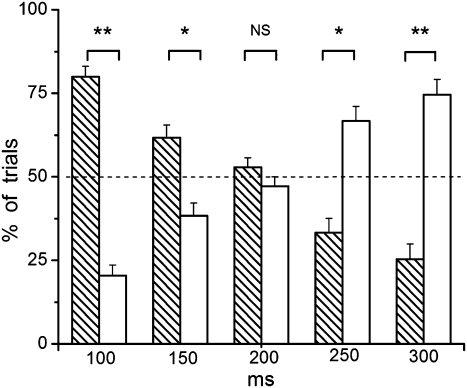Fig. 1.
Percentage of trials in which subjects were aware (blank columns) or unaware (hatched columns) of the change in stimulus timing. In each trial, subjects observed a sequence of visual stimuli occurring at 1 Hz except for one deviant stimulus that occurred sooner than expected by 100, 150, 200, 250, or 300 ms. Subjects performed 18 randomly presented trials in each category, judging whether the sequence was anisochronous or isochronous (which indicated whether they were aware or unaware of the change of deviant stimulus timing, respectively). As expected, the larger the deviation from isochronicity, the easier deviant stimuli were detected and vice versa. A deviation of 200 ms in stimulus timing corresponded to an approximate 50% detection rate for the whole group (N = 17). Error bars indicate SEM (**P ≤ 0.0001 and *P ≤ 0.001; NS, not significant).

